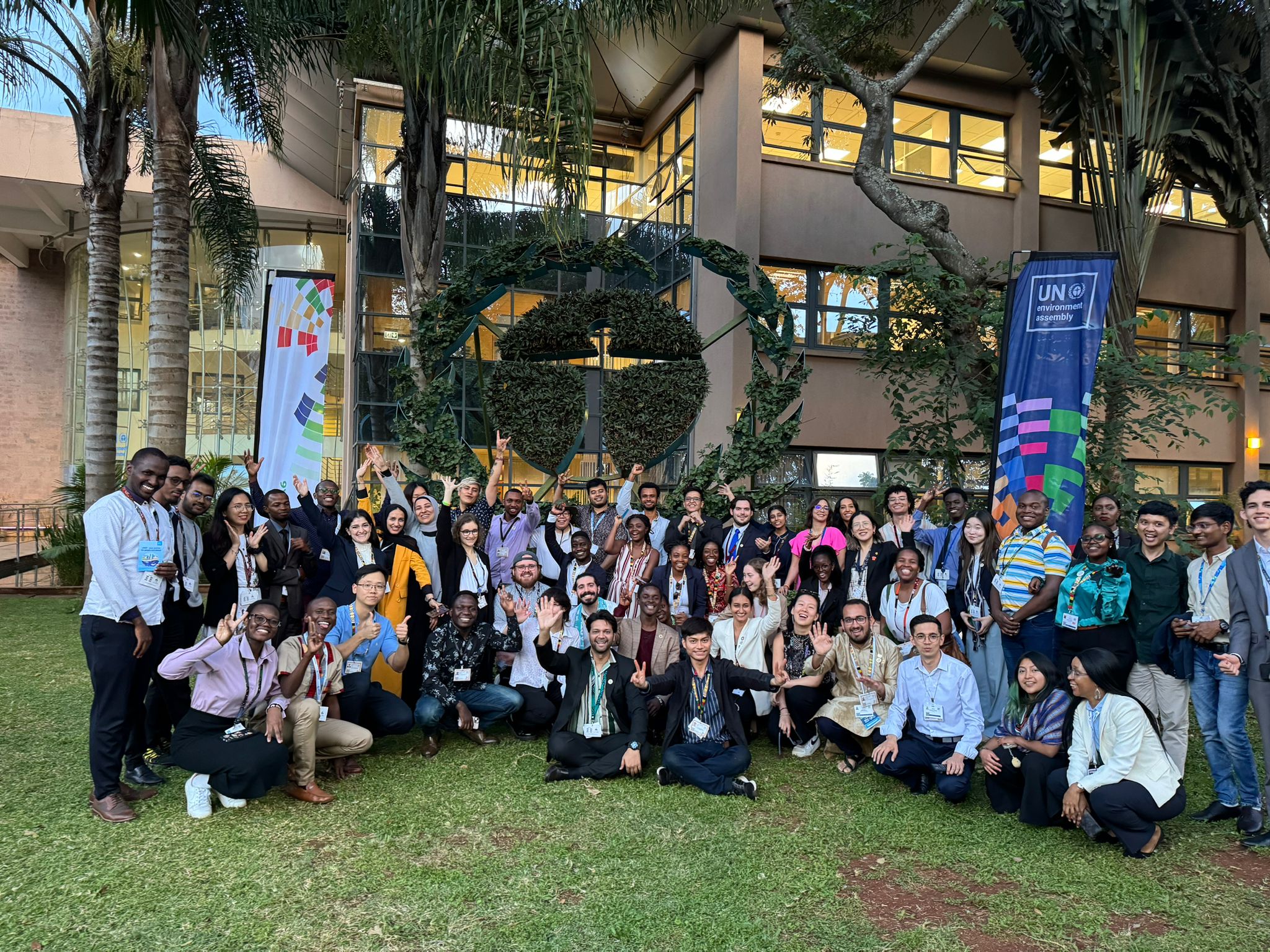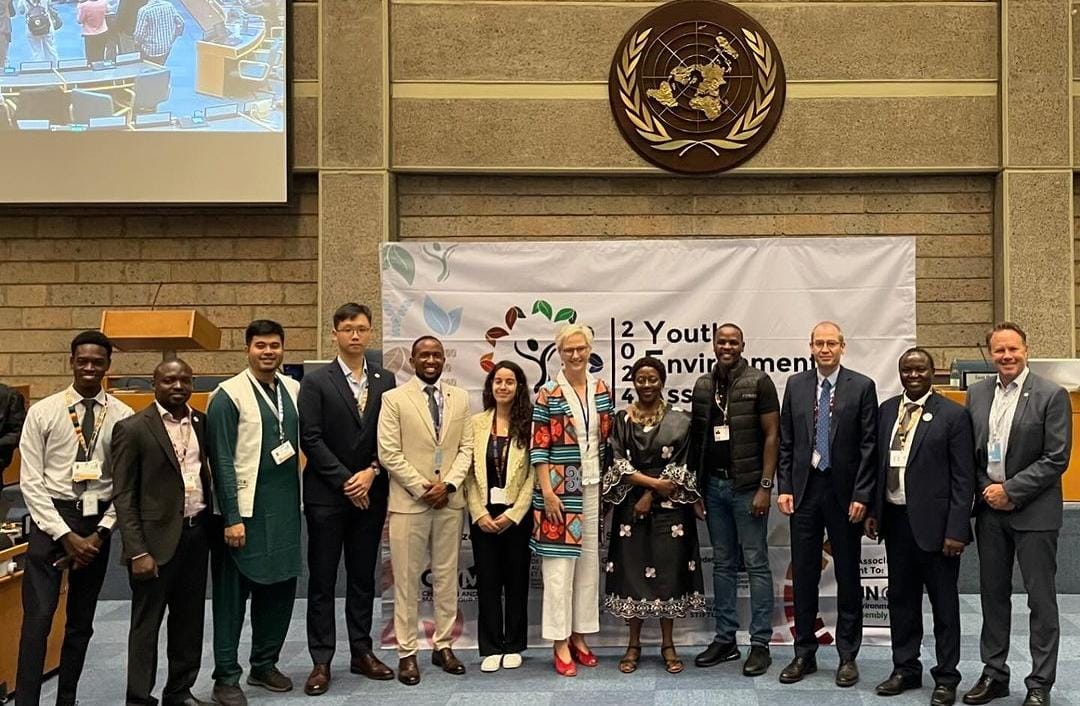Collective Action Against Global Crises: Insights from the UN Environment Assembly in Kenya – I’m Hadeer Amer from Egypt and I personally toke part of the sixth session of the United Nations Environment Assembly in Kenya, where policy makers, environmentalist and experts gathered in Nairobi called for stronger collective action to address three major global crises: climate change, biodiversity and land loss, and pollution and waste. African leaders attending the meeting were also urged to strengthen a more powerful multilateral system to combat environmental threats. This session, attended by over 5,000 participants from 190 countries, was characterized by the adoption of 15 resolutions, including pioneering texts related to water, air pollution, soil degradation, and ocean management.
This year, the Assembly discussed around 20 issues related to joint environmental work across five working groups.
First Working Group
The first working group addressed issues of highly hazardous pesticides, sound management of chemicals and waste, enhancing regional cooperation on air pollution to improve global air quality, combating sand and dust storms, and solar radiation modification to ensure the reliability and transparency of climate change engineering initiatives.
Second Working Group
The agenda of the second working group included enhancing international efforts to halt land degradation and reclaim degraded land, increasing the capacity of ecosystems and local communities to cope with drought, and developing standards, rules, metrics, and guidelines for implementing nature-based solutions to support sustainable development, enhancing ocean and marine management to address climate change, marine biodiversity loss, and pollution, and implementing effective and comprehensive solutions to enhance water policies to achieve sustainable development in the context of climate change, biodiversity loss, and pollution.
Third Working Group
The third working group focused on supporting national efforts to address environmental challenges by increasing cooperation between the United Nations Environment Assembly, the United Nations Environment Programme (UNEP), and multilateral environmental agreements, enhancing the role and continuity of regional ministerial environmental forums and regional offices in achieving multi-stakeholder cooperation in addressing environmental challenges, promoting a synergistic approach to addressing interconnected global crises such as climate change, biodiversity loss, and pollution, in addition to supporting sustainable development, and implementing effective, comprehensive, and sustainable multi-party measures to achieve climate justice.
Fourth Working Group
Issues addressed by Group Four included intensifying efforts to accelerate the transition locally, regionally, and globally to circular economies, the environmental aspects of minerals and metals, environmental assistance and recovery in conflict-affected areas, behavioral changes towards sustainable lifestyles, and circular, flexible, and low-carbon sugar cane industry.
Fifth Working Group
Issues covered by Group Five included amendments to the establishment document of the restructured Global Environment Facility, the provisional agenda and the timing and venue of the seventh session of the United Nations Environment Assembly (UNEA), and the management of credit funds and designated contributions.
Triple planetary crisis: Everyone’s Responsibility
Recognizing the importance of inclusivity and shared responsibility in addressing the triple planetary crisis, encompassing climate change, nature loss, biodiversity, and pollution, the sixth session of the United Nations Environment Assembly hosted dedicated dialogues addressing crucial issues to hold fruitful discussions and explore potential solutions to some of the most urgent environmental challenges of our time. Experts and stakeholders discussed the effectiveness of science, data, and digital transformation in accelerating the transition to a more sustainable future.
Experts also explored the role of the global financial system in effectively addressing climate change, biodiversity loss, and pollution, highlighting the need for innovative financial mechanisms to support environmental action. These dialogues were conducted critically to assess the impact of environmental collaboration in addressing the tripartite planetary crisis, aiming to reach a mechanism to enhance international cooperation and accelerate progress.
The dialogue among various stakeholders focused on enhancing inclusivity that leaves no one behind, highlighting the vital role of key groups and stakeholders, including civil society, academia, the private sector, and indigenous populations, in reaching effective and timely solutions. By combining diverse perspectives and experiences, the sixth session of the United Nations Environment Assembly emphasized the importance of cooperative action and shared responsibility in tackling complex global challenges.
Engaging Youth in Driving Change
In a world facing increasing environmental challenges, youth played a significant role in decision-making and shaping policies to combat climate change in UNEA-6. They are not just youth but a source of innovative and new solutions to this global crisis, not mere witnesses to environmental changes, but the strong voices leading change, with an independent spirit that drives them towards inspiring and motivating action.
In this context, the role of youth emerged as a key players in this battle, with the Children and Youth Major Group (CYMG) working to empower them to actively participate in environmental governance and conservation through the United Nations system as true partners in building a better world and a more sustainable environment where the need for children and youth to actively participate in climate change-related discussions cannot be underestimated. As inheritors of this fragile planet, the decisions made today will shape their future and that of future generations.
With nearly 1.8 billion young people in the world, these youth represent a significant proportion of the planet’s population, and this number is expected to grow significantly in the coming years. Therefore, their active engagement in environmental conservation policies is inevitable. Their voices must be heard, their concerns addressed, and their innovative ideas adopted.
In the end the President, Leila Benali handed over the presidency of the seventh session of the United Nations Environment Assembly to the head of the Environment Authority in the Sultanate of Oman, Abdullah Bin Ali Al Amri. It is worth mentioning that the choice of the Sultanate of Oman as the president of the session reflects the international community’s confidence in it and its leading role in protecting the environment and preserving its natural resources, as well as its supportive stance towards international efforts to preserve the environment.
About the United Nations Environment Assembly
The United Nations Environment Assembly, which meets biennially, serves as a vital platform for enhancing international cooperation through discussions and inputs related to effective international environmental policies and governance structures, being the highest decision-making body in the world on environmental matters. It addresses critical environmental challenges facing the world today, understanding these challenges safeguarding our environment, and rehabilitating it are at the core of the 2030 Sustainable Development Agenda.
Collective Action Against Global Crises: Insights from the UN Environment Assembly in Kenya











